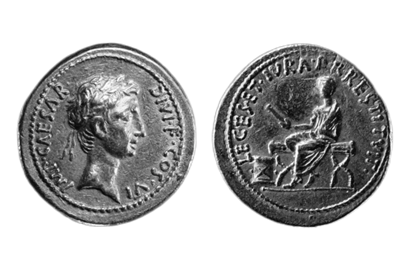1. INTRODUCTION
In the Greek world, coins had been invented and introduced since the end of the 7th century B.C. for the purpose of saving and hoarding. It was typically valuable metals and high-value denominations that were used for such deposits. They were an important resource for economic and political developments during a certain period of time, whether collected over a lifetime or only for a short period. The coinage was of vital significance for the Silk Road, serving as a medium of exchange and allowing for regional and interstate trade. The merchant's dynamics coupled with the circulation of money contributed greatly to the economy of the ancient Central Asian region. By analyzing the internal correlations between coins, we are able to build a chronological framework that can be used to support archaeology and history [1]. The ubiquity of diverse coins along the silk road, which consists of regions like the inner Asian corridor and the Indian Ocean region, provides a substantial volume of archaeological evidence for contemporary studies. This paper will explore the implications of the presence of coinage on commerce and trade, in relation to the coinage of the different states along the Silk Road. By examining the diversity of coins on the ancient Silk Road and their impact on the commercial and social development of the region from the perspective of ancient Xinjiang, South India, so another angle of understanding of the Silk Road can be obtained.
Some definitional work needs to be done before a thorough discussion can take place. Coins, in a large sense namely money, undoubtedly existed in many forms before the appearance of numismatics, including different metals as well as grain. The complexity of the bartering involved would not be elaborated here, but the notion of "money" clearly, did exist as a medium of exchange in different human societies. Leslie Kurke, who gave his modern interpretation of money, argued that "In anthropological terms, we can define money as any object or material that functions as a store of wealth, a measure of value, or a means of payment and exchange" [2]. Joe Cribb proceeded to develop this notion and suggested that " Coins can function as money because they are part of a system. The system enables individuals making and receiving a payment to hold a shared view of their value and acceptability for the purposes of that payment and of the broad range of payment in which they expect to participate in the future." [3, 4]. By exploring the delicate connection between money and power in his work, coinage itself was given additional meanings and symbols in antiquity. Therefore, this thesis shall also regard the various societal values by comparing the difference in materials as well as shapes of the coins from the East and Central Asia.
2. SASSANID SLIVER IN XINJIANG
As the power of the Sassanid Empire strengthened, the coins minted by the Sassanid circulated more extensively in the Middle East, China, and Europe. The major form of its existence was silver currency. The coinage occurred as a result of the function of money as a means of circulation. Generally minted coins could only be circulated in the domestic sphere as legal tender; once circulated abroad, they lost their legal tender status and became a simple piece of silver, more like a commodity, with different values according to its color and quality. According to the western travels of the Buddhist monk Xuanzang of the Tang Dynasty, a large part of the silver coinage of the Sassanid Empire was for tax collection purposes, as he wrote in his account of the Western Regions of the Great Tang Dynasty" Taxes for households, 4 coins per person" [5]. But the purpose of taxation was difficult to accomplish beyond the Sassanid territory, due to its lack of authority over the local area. Sassanid silver coins have a very wide distribution in China and are even recorded archaeologically in the coastal province of Guangdong (serve as evidence of Chinese and Persian maritime trade relations).
Xinjiang, the main window and corridor connected Han Chinese and nomads, will be discussed due to its special geographical aspect for the Silk Road. The Gaochang region, located about 40 kilometers south of the present-day city of Turpan in Xinjiang, has been the site of a substantial number of Sassanid silver coin finds (figure.1). The dynamism of the Silk Road trade was partly reflected in the discovery of Sassanid silver coins due to Gaochang's strategic military positioning. In addition, the status of the Silk Road trade directly influenced the changing political situation in the region, and thus the subsequent disruption of Sassanid currency. Currency circulated in the Gaochang area used precious metals, which could be used for various purposes. Among them, silver coins are very common and easily verifiable as burial goods. In ancient China, it was customary to place currency in the tomb with the burial, and Sassanid silver coins, since they were used as currency, could certainly be used as burial objects like other currencies. In the tombs of the Gaochang region, a coin was often found in the mouth of the dead, either a copper coin, a Byzantine gold coin, or more often, a Sassanid silver coin. The data also confirms that seventeen of the 25 graves had silver coins found in the mouths of the deceased [6]. In addition to the purpose of burial, it is worth noting that a significant portion of Sasanian silver coins were in fact in circulation as legal tender in the Gaochang region. This may seem to contradict what was stated before, since Sassanid silver coins were no longer legally valid outside their territories. The historical sources associated with the northern and southern dynasties and the Sui dynasty record the circulation of gold and silver currency in the area around Gaochang. The existence of its circulation as legal tender is still in doubt. However, archaeological excavations in a number of tombs exterior to the ancient city of Turpan have increasingly led scholars to accept the concept of legal tender: inscriptions in the tombs document the circulation and payment of Sasanian silver coins as currency. The silver coins of the Sassanid dynasty, however, eventually stopped circulating in Turpan as a result of strict restrictions by the Central Government of the Tang Dynasty, the popularization of copper coins, and the decline of the Persian Empire (with the source of the currency) [7]. According to historical sources, silver coins did not circulate after 710. The monetary system of the Han Dynasty was dominated by the Wuzhu coins (figure 2), which were made of copper and circulated throughout the country for centuries, gradually replacing Sassanid silver coins in Xinjiang. By the Tang Dynasty, the five-baht coin was gradually replaced by the Kaiyuan Tongbao coin, which circulated to Central Asia along with China's military expansion.

Fig.1.Persian Sasanian silver coins found in China (incomplete)

Fig.2. Chinese Wuzhu coin, introduced by emperor Wudi (140-86) in 118 B.C. Kunsthisoriches Museum, Munzkabinett

Fig.3. Chinese Kai yuan tong bao coin, introduced by Tang Dynasty in 621 A.D. Kunsthisoriches Museum, Munzkabinett
3. ROMAN COINS IN SOUTH INDIA
The complexity of trade and currency circulation in the Indian subcontinent is inextricably linked to its unique geographic location, with its many southern well-established ports providing local capacity and advantages for Indian Ocean trade, while the interaction with the overland Silk Roads has further contributed to its diversity. Roman coinage was one of the major contributors to economic and social change in South India, meanwhile, confirming the existence of a long-standing connection between the Eastern and Western worlds across the Western Indian Ocean. This long-term, ephemeral examination can reveal not only the nuances of exotic goods in the region but also the chronological framework of a particular period in South Indian history. The presence of both Dinaric and native Indian-made hallmark coins in the hoards demonstrates the diversity of the currency and economy of southern India. In common with other highly monetized regions of the time: China, Rome, and Sassanid in the West. In India, especially in the Deccan plateau and coastal Andhra Pradesh, there existed coins in circulation that were often varied and showed great discrepancies in production processes, appearance, and precious metal content [8].
Roman coins began to flow into South India around the end of the 1st century B.C. Among them were gold (figure.4) and silver (figure.5) coins (aurei and denarii, respectively). It demonstrates the direct trade between Rome and India. Because of the availability of ports in the Mediterranean region and along the Red Sea coast, Rome was able to use such precious metals as gold and silver coins for large-scale trade with governments in South India on a state level. In contrast to the Sassanid silver currency and copper coins from Xinjiang, the specificity of the material of the Roman coins found in the Indian peninsula also gave them some additional purposes and applications. In addition to being the practical medium of exchange, high-quality gold and silver could be used as raw material for, undoubtedly, artifacts. Very commonly, Roman gold and silver coins were reminted locally into sources of works of art.
The difference between gold and silver coins in terms of material and their value predetermines some of the subtle differences in their purpose of use [9]. The denarii coins of the Indian peninsula are found in large caches or separately, and their storage and use patterns suggest that they have a fundamental monetary significance. Areas with high concentrations of silver coins, such as the Andhra coast and the Palghat Pass further south, were also associated with Buddhist sites of worship and monastic dwellings during this period. Evidence from inscriptions suggests that the denarii gradually became the synonymous of money, and they were used as payment for offerings to these institutions, as well as a quantifiable expression of charitable will. In contrast, gold coins they were more likely to be found alone or in small caches. These hoards also sometimes contained gold jewelry, something not commonly found in silver coin hoards, which has shown that these objects are no longer considered currency, but are understood to be a specific type of metal with recognized collector value.

Fig.4. aureus (Roman golden coins), Head of Octavian, right. Octavian (Augustus), seated left on bench, holding scroll in right hand, produced in 28 B.C. the British Museum

Fig.5. denarii (Roman silver coins), Wreathed head of Caesar right; behind, crescent and inscription; before, inscription. (Octavian), produced in 28 B.C. the British Museum
4. CONCLUSION
The meticulous study of the coins found provides a perspective on the complex interactions between individuals and the material world, which are often abstracted as different exchanges happened to individuals and states, such as " trade ", "ritual " and "tribute ", which are either rigidly staged or treated as infinite continuities. An examination of subtleties reveals that late antiquity characterized the Central Asia, as well as the area around the Indian Ocean region during the same period. Such changes show the diminishing strength of global cross-regional connections. Viewing the Silk Road, trade, and different societies and economies through the lens of coinage allows for a more nuanced look at how different currencies shaped local societies and economies. The prevalence of various currencies is apparent from the Silk Road's contribution to the homogenization of some societies and cultures between regions, but it also indirectly led to inconsistencies in the circulation of currencies in certain regions (e.g. Turpan, Xinjiang), which somehow adds impediments to the flow of goods. The emergence and circulation of currency in this period also laid an indispensable and significant economic foundation for the subsequent course of world history. Commerce along the Silk Road and the Indian Ocean continued to flourish on this basis, and with the subsequent entry of Muslim merchants and the rise of power of states, trade continued to deepen and inter-regional connectivity grew.
References
[1]. Alram, Michael. "The History of the Silk Road as reflected in Coins." The History of the Silk Road as Reflected in Coins (2004): 1000-1022.
[2]. Kurke, Leslie, and Geoffrey Kurke. Coins, bodies, games, and gold: the politics of meaning in archaic Greece. Princeton University Press, 1999
[3]. Joe Cribb, “The Origins of the Indian Coinage Tradition”, Volume 19, no.1(2003): 1-3.
[4]. Hansen, Valerie, and Shanghai Bowuguan. "The Place of Coins and Their Alternatives in the Silk Road Trade." In Proceedings of the Symposium on Ancient Coins and the Culture of the Silk Road, Shanghai Museum, Shanghai Books Press. 2011.
[5]. Xuan Zang. “The Great Tang Dynasty Record of the Western Regions”, Numata Center for Buddhist Translation & Rese, Volume11, (1997):
[6]. Li, Sun. "The distribution and significance of Sassanid Silver currency in China." Chinese Archaeology 6, no. 1 (2006): 190-194.
[7]. Xia Nai (1957). “Zhongguo zuijin faxian de Bosi Sashan chao yinbi 中国最近发现的波斯萨珊朝银币” (Recent Discoveries of Sassanid Silver Currency in China). Kaogu Xuebao 考古学报 1957.2.
[8]. Darley, Rebecca. "Self, other and the use and appropriation of late Roman coins in peninsular India (4th–7th centuries CE)." In Negotiating Cultural Identity, pp. 57-75. Routledge India, 2019.
[9]. Seland, Eivind Heldaas. "Archaeology of trade in the western Indian Ocean, 300 BC–AD 700." Journal of Archaeological Research 22, no. 4 (2014): 367-402.
Cite this article
Yi,F. (2023). A Study on the Complexity and Application of Coinage along the Silk Road. Communications in Humanities Research,4,124-129.
Data availability
The datasets used and/or analyzed during the current study will be available from the authors upon reasonable request.
Disclaimer/Publisher's Note
The statements, opinions and data contained in all publications are solely those of the individual author(s) and contributor(s) and not of EWA Publishing and/or the editor(s). EWA Publishing and/or the editor(s) disclaim responsibility for any injury to people or property resulting from any ideas, methods, instructions or products referred to in the content.
About volume
Volume title: Proceedings of the International Conference on Interdisciplinary Humanities and Communication Studies (ICIHCS 2022), Part 2
© 2024 by the author(s). Licensee EWA Publishing, Oxford, UK. This article is an open access article distributed under the terms and
conditions of the Creative Commons Attribution (CC BY) license. Authors who
publish this series agree to the following terms:
1. Authors retain copyright and grant the series right of first publication with the work simultaneously licensed under a Creative Commons
Attribution License that allows others to share the work with an acknowledgment of the work's authorship and initial publication in this
series.
2. Authors are able to enter into separate, additional contractual arrangements for the non-exclusive distribution of the series's published
version of the work (e.g., post it to an institutional repository or publish it in a book), with an acknowledgment of its initial
publication in this series.
3. Authors are permitted and encouraged to post their work online (e.g., in institutional repositories or on their website) prior to and
during the submission process, as it can lead to productive exchanges, as well as earlier and greater citation of published work (See
Open access policy for details).
References
[1]. Alram, Michael. "The History of the Silk Road as reflected in Coins." The History of the Silk Road as Reflected in Coins (2004): 1000-1022.
[2]. Kurke, Leslie, and Geoffrey Kurke. Coins, bodies, games, and gold: the politics of meaning in archaic Greece. Princeton University Press, 1999
[3]. Joe Cribb, “The Origins of the Indian Coinage Tradition”, Volume 19, no.1(2003): 1-3.
[4]. Hansen, Valerie, and Shanghai Bowuguan. "The Place of Coins and Their Alternatives in the Silk Road Trade." In Proceedings of the Symposium on Ancient Coins and the Culture of the Silk Road, Shanghai Museum, Shanghai Books Press. 2011.
[5]. Xuan Zang. “The Great Tang Dynasty Record of the Western Regions”, Numata Center for Buddhist Translation & Rese, Volume11, (1997):
[6]. Li, Sun. "The distribution and significance of Sassanid Silver currency in China." Chinese Archaeology 6, no. 1 (2006): 190-194.
[7]. Xia Nai (1957). “Zhongguo zuijin faxian de Bosi Sashan chao yinbi 中国最近发现的波斯萨珊朝银币” (Recent Discoveries of Sassanid Silver Currency in China). Kaogu Xuebao 考古学报 1957.2.
[8]. Darley, Rebecca. "Self, other and the use and appropriation of late Roman coins in peninsular India (4th–7th centuries CE)." In Negotiating Cultural Identity, pp. 57-75. Routledge India, 2019.
[9]. Seland, Eivind Heldaas. "Archaeology of trade in the western Indian Ocean, 300 BC–AD 700." Journal of Archaeological Research 22, no. 4 (2014): 367-402.









